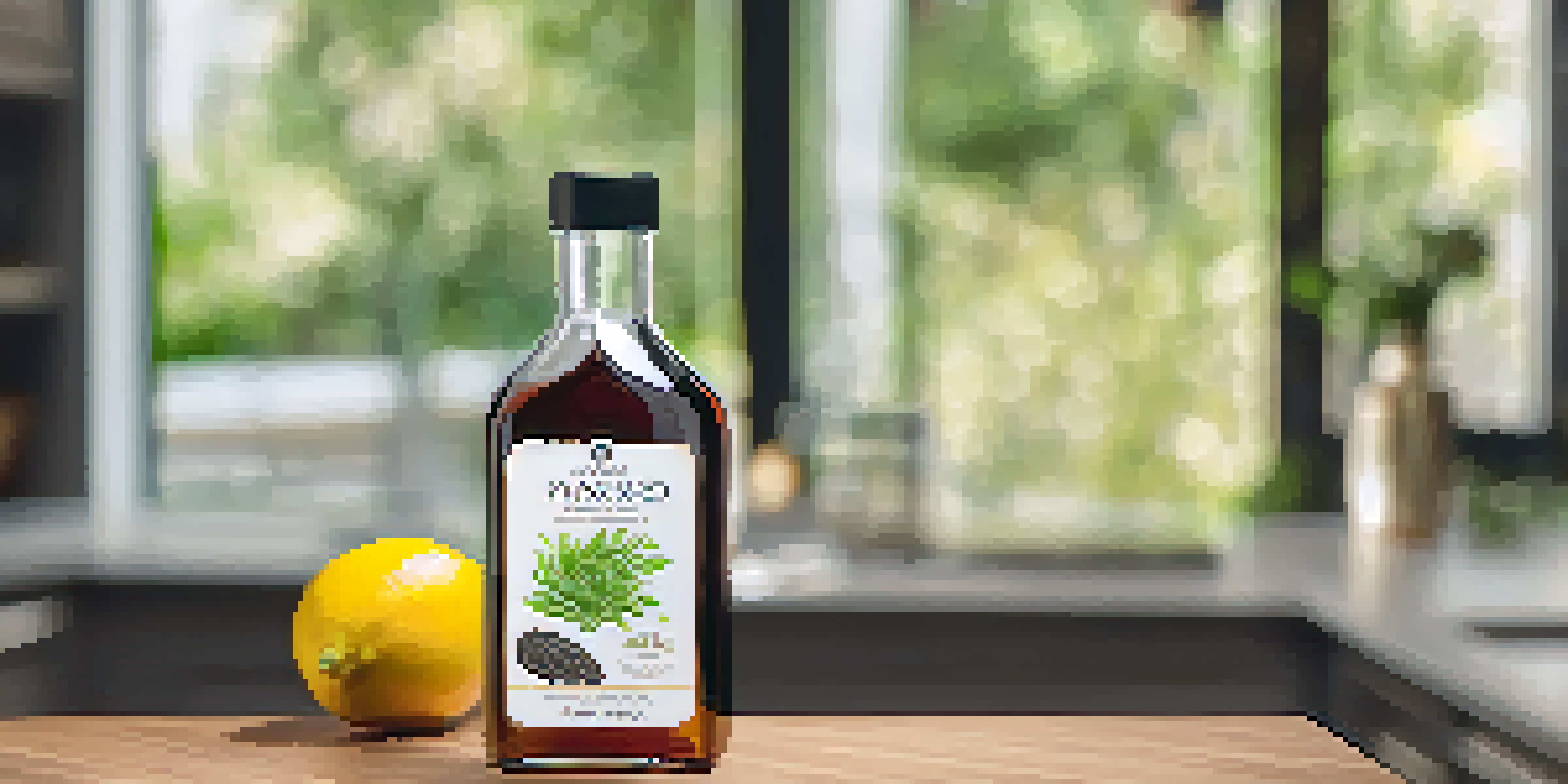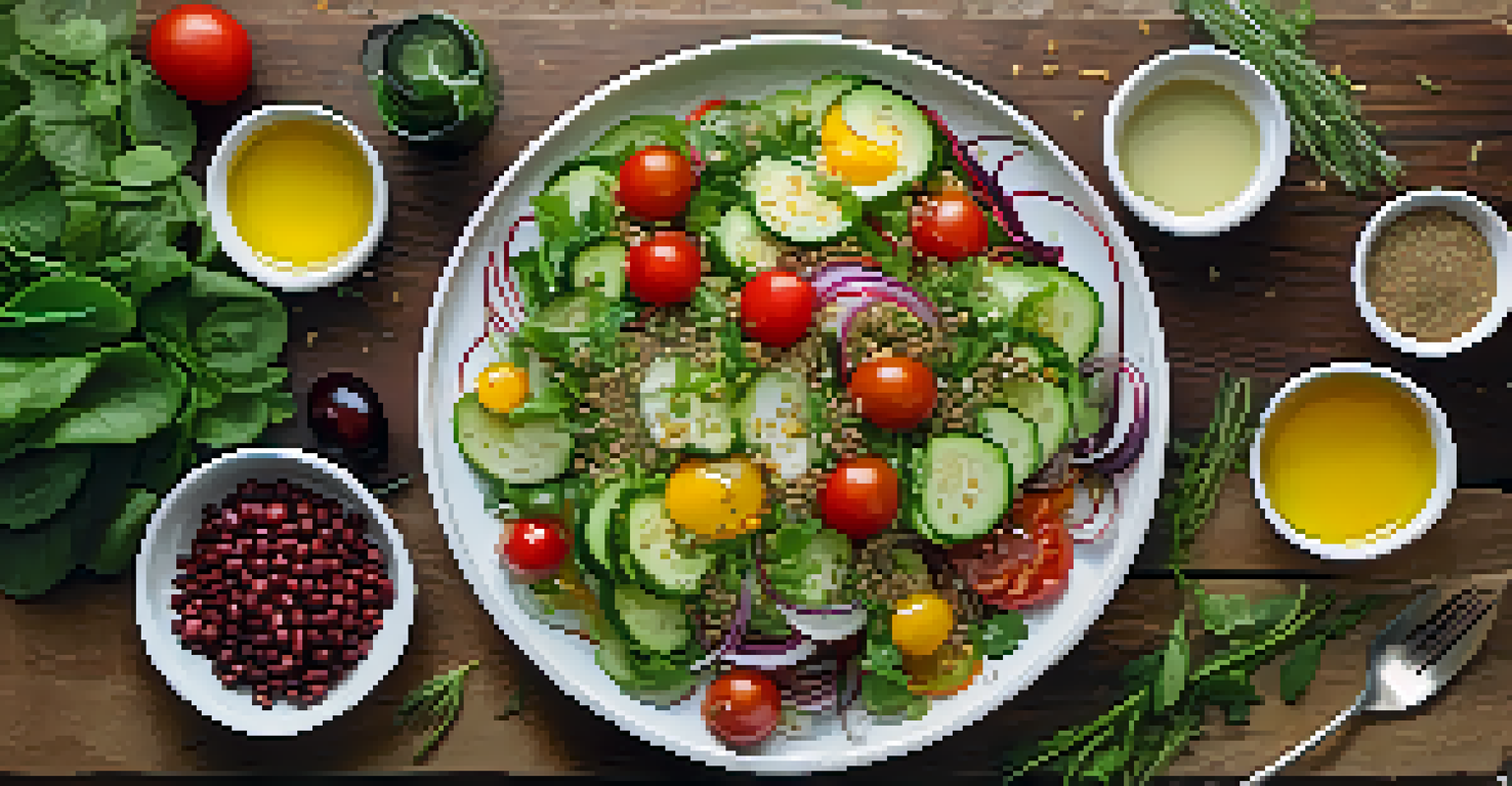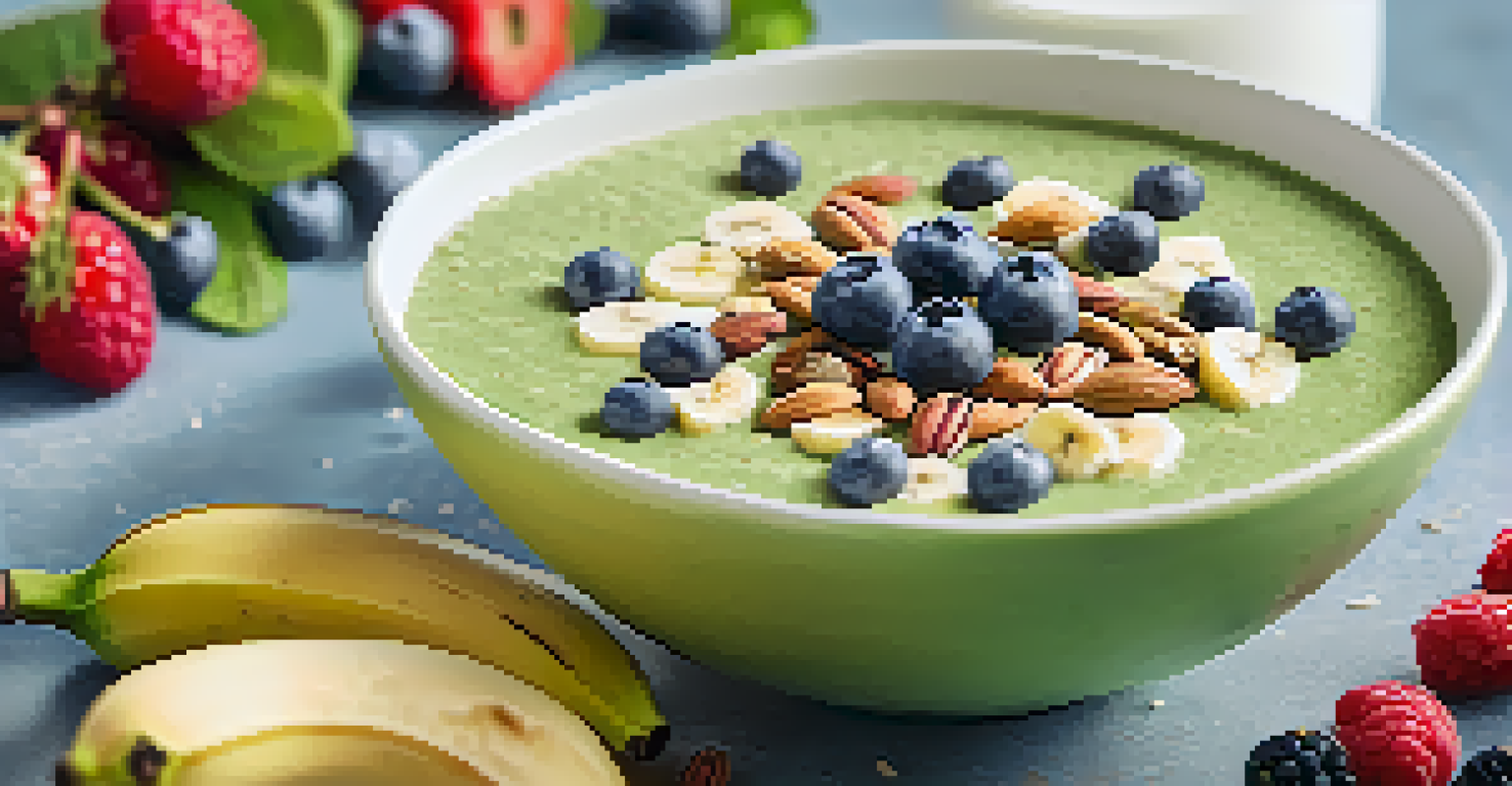How to Use Flaxseed Oil in Vegetarian Recipes Effectively

What is Flaxseed Oil and Why Use It in Cooking?
Flaxseed oil, derived from the seeds of the flax plant, is rich in omega-3 fatty acids, which are essential for heart health. It's a fantastic plant-based source of these healthy fats, making it particularly popular among vegetarians and vegans. Not only does it offer nutritional benefits, but it also adds a unique, nutty flavor to dishes.
Let food be thy medicine and medicine be thy food.
Using flaxseed oil in your cooking can enhance your meals while providing a boost of nutrients. However, it's important to note that this oil has a low smoke point, which means it's best used in uncooked dishes or added to foods after cooking. This helps preserve its delicate flavor and nutritional value.
Incorporating flaxseed oil into your vegetarian recipes can be both delicious and beneficial, paving the way for healthier meal options. Whether you're drizzling it on salads or blending it into smoothies, you'll find that it seamlessly fits into your cooking routine.
How to Select High-Quality Flaxseed Oil
When choosing flaxseed oil, look for cold-pressed varieties, as this method retains more nutrients and flavor. High-quality oils will often come in dark glass bottles, which help protect them from light and oxidation. Always check the label for freshness, as flaxseed oil can spoil quickly.

You might also want to consider organic options to ensure that you're avoiding any potential pesticides or additives. The oil should have a pleasant, nutty aroma; if it smells rancid or off, it's best to pass on that bottle. Freshness is key, so try to buy from a reputable source.
Nutritious Flaxseed Oil Benefits
Flaxseed oil is a rich source of omega-3 fatty acids, making it an excellent addition to vegetarian diets for heart health.
Remember that flaxseed oil should be stored in a cool, dark place to extend its shelf life. Once opened, it's advisable to keep it in the refrigerator, as this helps maintain its freshness and potency, ensuring you get the most out of your culinary adventures.
Incorporating Flaxseed Oil into Salad Dressings
One of the simplest ways to use flaxseed oil is in homemade salad dressings. Combine it with vinegar, lemon juice, or herbs for a zesty addition to your greens. A basic recipe could be mixing three parts flaxseed oil with one part balsamic vinegar, creating a nutritious dressing that elevates your salads.
Eating well is a form of self-respect.
You can also experiment with various flavorings, such as garlic, mustard, or honey, to customize your dressing to your taste. The nutty flavor of flaxseed oil pairs beautifully with fresh vegetables, making your salads not just healthy but also satisfying. It's a great way to sneak in those omega-3s without compromising on flavor.
Don’t forget that you can use flaxseed oil as a finishing touch. Drizzling it over your salad right before serving can enhance the taste, making it even more appealing. Plus, you'll be reaping the health benefits with every bite!
Using Flaxseed Oil in Smoothies and Shakes
Flaxseed oil is a fantastic addition to your morning smoothies or protein shakes. Just a tablespoon can give your drinks a creamy texture while infusing them with healthy fats. The oil blends well with fruits, yogurt, and even nut milks, making it a versatile ingredient.
For a simple smoothie recipe, try blending spinach, banana, almond milk, and a tablespoon of flaxseed oil. Not only will it boost your omega-3 intake, but it will also keep you feeling full longer. It’s a delicious way to start your day on a healthy note!
Choosing Quality Flaxseed Oil
Opt for cold-pressed, organic flaxseed oil in dark bottles to ensure freshness and maximum nutritional benefits.
You can also add flaxseed oil to your overnight oats for an extra nutritional punch. Mix it in with your oats and toppings the night before, and you'll have a ready-to-eat breakfast that fuels your mornings. The possibilities are endless!
Flaxseed Oil in Baking: Tips and Tricks
While flaxseed oil isn’t the best choice for high-heat cooking, it can be a great addition to baking. You can substitute it for other oils or fats in recipes like muffins or pancakes. Just remember to use it in moderation to maintain the right texture and flavor in your baked goods.
To replace other oils, use flaxseed oil at a 1:1 ratio. For example, if a recipe calls for a cup of vegetable oil, you can substitute it with a cup of flaxseed oil. This not only adds a nutty flavor but also boosts the nutritional profile of your baked treats.
Keep in mind that flaxseed oil works best in recipes that don’t require a lot of heat. For items that are baked at lower temperatures, like cookies or quick breads, it can be an excellent way to enrich your recipes with omega-3s while still satisfying your sweet tooth.
Flavor Pairings for Flaxseed Oil
To make the most of flaxseed oil's unique flavor, it's essential to know what it pairs well with. Its nutty taste complements many ingredients, including citrus fruits, honey, and various herbs. For instance, mixing it with lemon juice can create a refreshing vinaigrette for salads.
You can also combine flaxseed oil with spices such as paprika or cumin to enhance the flavor of roasted vegetables. This versatility makes it a great addition to an array of dishes, from simple salads to complex main courses, allowing you to get creative in the kitchen.
Versatile Uses in Cooking
Flaxseed oil can enhance salads, smoothies, and baked goods, providing a nutty flavor and added health benefits.
Don’t hesitate to experiment! Try incorporating flaxseed oil into sauces or dips, like hummus or pesto, to add depth and richness. With a little creativity, you can find numerous ways to enjoy its flavor while boosting the nutritional value of your meals.
Storage and Shelf Life of Flaxseed Oil
Proper storage is crucial for maintaining the quality of flaxseed oil. As mentioned earlier, keeping it in a cool, dark place, preferably in the refrigerator, will help prevent it from going rancid. Always check the expiration date before use, as fresh oil will have the best flavor and health benefits.
It's also a good idea to transfer the oil into smaller bottles if you buy in bulk. This way, you can minimize exposure to air and light with each use. Additionally, consider using a pump or a pour spout to reduce the amount of air introduced into the bottle.

Always give flaxseed oil a sniff before using it; if it smells off, it’s best to discard it. By following these simple storage tips, you can enjoy the full benefits of flaxseed oil in your vegetarian cooking for as long as possible.